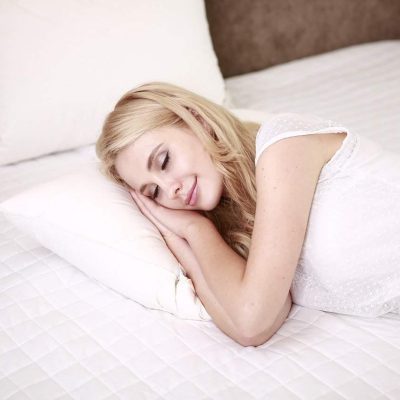Photo by Heike Frohnhoff from Pixabay
In the golden years of life, the comfort of one’s own home becomes a sanctuary. Many seniors prefer to age in place, savoring their independence, yet may require some assistance to maintain their quality of life. A growing area of support comes from an unexpected yet incredibly beneficial source: massage therapy. This non-invasive and non-pharmaceutical method has much to offer as a complementary treatment in senior care for those choosing to age in the comfort of their own homes.
Table of Contents
ToggleBackground of Massage Therapy
The therapeutic touch of massage therapy dates back to ancient times, with its benefits appreciated by many cultures worldwide. Today, various forms of massage therapy—from Swedish to reflexology—serve as recognized tools in healthcare, helping to address physical concerns like muscle recovery and emotional health issues.
Massage therapy’s acceptance in healthcare is a testament to its efficacy, often complementing traditional treatment methods. It serves as a viable therapeutic approach across various settings—hospitals, rehabilitation centers, and notably, within the home environment, catering to the needs of seniors opting for home-based care.
Benefits of Massage Therapy for Seniors
Complementary treatments, such as massage therapy, often form a holistic, patient-centered care approach. They become even more essential when considering home-based senior care where there’s an emphasis on enhancing the quality of life and reducing reliance on pharmaceutical interventions. Below, we’ll talk about some benefits of massage therapy.
Physical Benefits
One of the prime advantages of massage therapy is the wide array of physical benefits it brings, particularly relevant for seniors. As we age, our bodies naturally undergo various changes, often leading to discomfort, decreased mobility, and other health-related challenges.
Regular massage therapy sessions can provide significant pain relief, particularly for conditions like arthritis or other musculoskeletal issues that are common in seniors. It enhances blood circulation, promoting better oxygen and nutrient supply to body tissues, leading to improved overall body function.
Increased mobility is another noteworthy benefit. Massage therapy helps ease joint stiffness, enhancing range of motion and flexibility. This means seniors can enjoy their daily activities with less pain and greater ease.
Moreover, a good massage can significantly improve sleep quality. It aids relaxation and reduces the discomfort that might disrupt sleep, a boon for seniors who often struggle with sleep disturbances.
Mental and Emotional Benefits
Beyond the physical realm, massage therapy offers profound mental and emotional benefits. Human touch has been scientifically proven to reduce feelings of anxiety and depression. For seniors who might often feel isolated or anxious, massage therapy can provide a calming, reassuring presence, improving their mood and emotional state.
Cognitive benefits also emerge from regular massage sessions. Some studies suggest it can help improve attention and clarity of thought, particularly valuable for seniors facing cognitive decline. In a world that can often be confusing or overwhelming, massage therapy offers a soothing, centering effect that can help improve mental well-being.
With these physical and mental benefits, you may be wondering – does Medicare cover massage therapy? Unfortunately, it does not. Original Medicare does not typically cover massage therapy, considering it an alternative therapy rather than a primary form of medical treatment.
However, it’s important to note that Medicare Advantage Plans, also known as Part C, might have different stipulations. These plans are offered by private insurance companies contracted with Medicare and often provide additional benefits beyond what Original Medicare covers.
Implementing Massage Therapy: Elevating Home-based Senior Care
Incorporating massage therapy for seniors into the home-care routine doesn’t necessarily require extensive resources or dramatic changes to the existing care plan. With the right understanding, training, and approach, the transition can be seamless and highly beneficial.
This can take the form of caregivers providing gentle massages to help soothe discomfort, promote relaxation, and increase personal connection during daily care routines.
Alternatively, professional massage therapists can also be brought in for more specialized sessions, depending on the senior’s needs and preferences. In both cases, the process of integrating massage therapy becomes an enriching addition to a senior’s care routine, promoting comfort and healing within the familiarity of their own home.
The Crucial Role of Caregivers
For massage therapy to be effectively integrated into a home-care setting, the role of the caregiver is pivotal. Caregivers with appropriate training can employ basic, yet highly effective, massage techniques, cultivating an atmosphere of tranquillity and supportive care.
However, these caregivers must be trained correctly, with an emphasis on understanding the unique health conditions that may influence the administration of massage therapy. This ensures safety, effectiveness, and a personalized approach that acknowledges the senior’s specific needs.
Training resources can range from certified massage courses, online tutorials, or guided sessions from professional therapists. The goal is to empower caregivers to deliver beneficial massage treatments safely and confidently.
Personalized Care: Respecting Individual Needs and Preferences
When it comes to senior care, one size certainly does not fit all. The uniqueness of each senior extends from their health conditions to their personality traits, necessitating a highly individualized approach to their care plan.
This principle remains relevant when integrating massage therapy. Attention should be paid to the senior’s comfort, health status, and personal preferences. The type of massage, its intensity, duration, and frequency may need adjustment for each individual. This could mean a lighter touch for some, or more focused, deeper techniques for others.
Engaging seniors in the decision-making process is essential. Their feedback and comfort level can guide the fine-tuning of their massage regimen, ensuring they gain maximum benefits from each session. This personalized approach underscores the essence of home-based care: to enhance the quality of life for seniors within the unique, cherished environment of their own homes.
Conclusion

The landscape of senior care is ever-evolving, with a constant aim to provide enhanced, personalized care for seniors in the comfort of their homes.
Massage therapy emerges as a powerful tool in this context, offering a myriad of physical, emotional, and mental health benefits. While challenges such as cost and coverage exist, the potential rewards are transformative, fostering improved quality of life and holistic well-being for seniors.
Encouragingly, with the right approach, knowledge, and resources, the integration of massage therapy into home-based senior care is not just achievable—it’s a game-changer.








